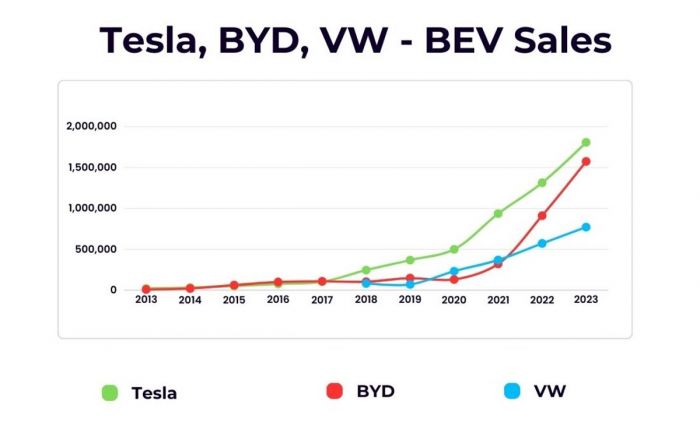The way the engine works remains a mystery to many, and it also fascinates many enthusiasts. The spark plug is among the many components that make the combustion engine start and run as it does. A vehicle with low power or poor fuel economy probably has a spark plug issue.
Electrical problems highlights
- Level of urgency:high
- DIY inspection:possible but complicated
- DIY repairs:impossible
- Can you drive?yes, if it starts
- Price of repairs:$300 - $650
- Ifignored:a lot of functions may not work, glitches, issues with equipment
- Ways to fix:check the wiring, battery, alternator, and the faulty equipment itself

How does a spark plug work?
Almost every other driver knows what a spark plug is and what it does. This electrical device, designed to fit in the cylinder head, plays a crucial role in igniting the compressed aerosol mix. A spark plug comes with an insulated electrode connected using a heavily insulated wire to the ignition coil.
A spark plug is designed such that its base acts as the grounding terminal. The spark plug sends a spark that can be in the range of 5,000 volts up to 40,000 volts. This voltage depends on the type of engine and the conditions it is exposed to. To appreciate how a spark plug works, one will need to understand the ignition coil where all the voltage comes from.
Ignition coil and voltage
In high school, we learned about electromagnetism and other related terms, such as induction. An ignition coil works using the induction principle, where an electric current is used to create a magnetic field on a primary coil and creating a magnetic field. A secondary winding adjacent to the primary one has much more windings.
When an electric current on the primary winding is switched off, mutual inductance occurs, and the magnetic field collapses on both the primary and secondary windings. This collapse of voltage induces a higher voltage in the secondary winding.
If the primary winding of the ignition coil has 200 turns of the wire, the secondary winding is typically set at 20,000 turns. The car battery supplies 12 volts, and the induction mechanism will make the primary winding a voltage in the range of 200 volts. Because the secondary winding has 100 times more than the primary coil, the voltage is multiplied by 100. This means the secondary winding will have a voltage of around 20,000 volts.
How to increase spark plug voltage
The voltage discharged by the spark plug depends on several factors. Some factors are easy to control, while others are complex and a bit expensive to change. Here are the different ways one can increase the spark plug voltage;
1) The spark plugs
As you drive your car, the spark plug electrode edge becomes rounded as opposed to when they were sharp when new. The voltage in the spark plug is set at a certain range to cater for when the palladium or platinum insert is well tipped to when it becomes old due to usage. As the tip of the spark plug becomes more blunt and the gap widens, the voltage requirement increases.
When the spark plug gap increases, the voltage proportionally increases. Your vehicle's spark plugs come pre-gapped from the factory. However, tuners have been known to increase the size of the gap. This exercise aims to increase the exposure of the air-fuel mixture in the chamber, which maximizes the burn efficiency. However, care must be taken to ensure no misfires due to turbulence in the chamber.
2) Adjusting air/fuel ratio
When the air/fuel mixture enters the combustion chamber, it acts as an insulator, and no spark can be sent. However, as the air/fuel mixture starts getting pressurized because of the pressing piston head, it becomes ionized when it reaches dielectric strength. This is when electrons travel through the spark plug gap and ignite.
The air/fuel mixture can be used to increase the voltage of the spark plug by making it leaner. This is done by reducing the air/fuel volume in the combustion chamber, which in turn means more voltage will be required to ignite the mixture. For safer exhaust emissions by the engine, the air/fuel mixture is made leaner, leading to higher voltage.
Another thing to note about the air/fuel mixture is that the temperature has to be relatively high to ensure the voltage is within the set range. When the engine is cold, which also means the mixture is cold, the voltage required for ignition should be higher than normal. It is worth noting that misfires become relatively common when the engine operates in such a low-temperature environment.
3) Ignition coil windings
As highlighted earlier, the ignition coil windings in your car directly influence the voltage your spark delivers in the combustion chamber. When tuners want to increase the voltage of the spark plugs, they first focus on the ignition coil or the magneto.
Tuners and mechanics will not physically add windings to an ignition coil but invest in one with more windings. You can transform your engine into a menacing race car by changing the ignition coil to a higher voltage. But like every mod you can think of, high voltage coils should only be done after you have taken appropriate action as far as higher combustion chamber compression, boost, and tweaking the turbocharger.
Why you might need to increase the spark plug voltage
The mass-produced vehicles feature standard equipment, tools, and systems. The engine is set to produce a given torque. However, when you take the vehicle to a professional tuner, certain systems, tools, or devices in the vehicle can be tweaked to make your car deliver more power and perform better.
Depending on your geographical location, the engine of the car you drive might not be able to meet the vehicle's power needs. You might need to increase the spark plug voltage to give the engine the necessary boost. You may also choose to use your car for a specific activity, such as towing or sporting. Here are a few reasons you might need to increase the spark plug voltage.
1) When it's very cold
During winter, the engine and everything is very cold. When you want to start the car, the electrode needs to be able to transmit the voltage to the combustion chamber. Even though a cold start will make the oil and the coolant warmer in preparation for the engine's cranking, the higher spark plug voltage requirement is necessary.
The voltage requirement gradually drops once the engine is warmed up or as the engine warms. If your vehicle has trouble during the ignition stage because of the extremely low temperature in your area, it is advisable to consider adding voltage to the spark plug. You might notice misfires when the voltage is inadequate, especially at low engine speeds. Once the engine warms up, the need for high voltage reduces.
2) Performance cars
Without adjusting too much of your car's engine, you can add a substantial amount of voltage by simply widening the gap. The art of adjusting the spark plug gap, also called gapping, is something almost every other racing car must undergo. As stated earlier, the wider the gap, the higher the voltage required to ignite the air/fuel mixture.
3) When the air/fuel ratio is dense
In a racing environment, the air/fuel is usually dense, and there is a lot more swirl, which makes ignition in the chamber harder. The air/fuel is made denser by the higher compression in such a high-performance vehicle. All these factors, combined with the fact that the high RPMs require limited time for the distributor to build up a strong spark, you will find a high voltage is necessary.
Under normal circumstances, your everyday car has a plug gap starting from as low as 0.02", while many of the sports cars have a gap of 0.035" or more. Though factors such as the type of fuel, ignition type, and cylinder head are factors to consider, getting a big gap is necessary to ensure an ignition every time the spark plug fires.
Conclusion
After reading the article, you get a pretty good idea of why the spark plug is critical in the powering of the engine. The modern spark plug receives the necessary voltage from the ignition coil. Rarely will you need any mod of spark plugs or ignition coils for your car.
However, as stated above, there are situations when you might need that extra oomph. To achieve the best results, you will need to learn how to safely increase the voltage of the spark plugs without negatively affecting the performance of other parts.
About the authors
The CarAraC research team is composed of seasoned auto mechanics and automotive industry professionals, including individuals with advanced degrees and certifications in their field. Our team members boast prestigious credentials, reflecting their extensive knowledge and skills. These qualifications include: IMI: Institute of the Motor Industry, ASE-Certified Master Automobile Technicians; Coventry University, Graduate of MA in Automotive Journalism; Politecnico di Torino, Italy, MS Automotive Engineering; Ss. Cyril and Methodius University in Skopje, Mechanical University in Skopje; TOC Automotive College; DHA Suffa University, Department of Mechanical Engineering






Add comment